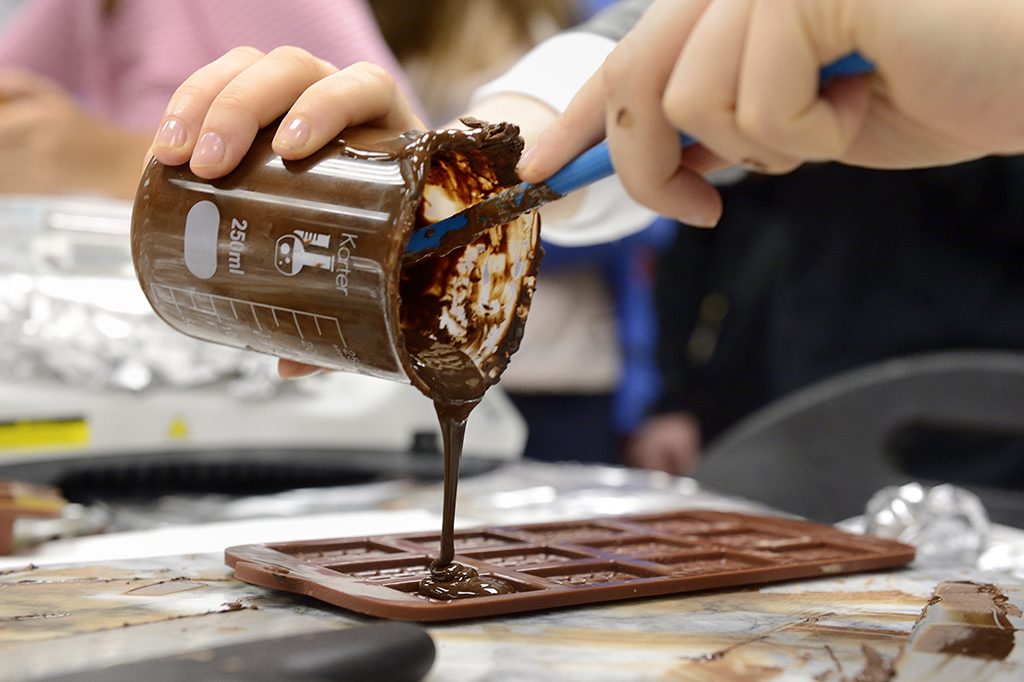 While most are familiar with the rich taste of chocolate, few know what that sweet deliciousness looks like under a scanning electron microscope or in the graphs produced by an X-ray diffractometer. (Hint: With its craggy surface studded with crystals of sugar and fat globules of cocoa butter, chocolate resembles the surface of an alien planet.)
While most are familiar with the rich taste of chocolate, few know what that sweet deliciousness looks like under a scanning electron microscope or in the graphs produced by an X-ray diffractometer. (Hint: With its craggy surface studded with crystals of sugar and fat globules of cocoa butter, chocolate resembles the surface of an alien planet.)
Just ask Victoria Michaels, one of 20 students who took Chocolate: An Introduction to Materials Science during last January’s Intersession.
“It’s incredibly cool to get a totally new perspective like this on chocolate, which is something we see all the time and don’t really think about,” says the junior international studies major.
Offered through the Whiting School of Engineering’s Department of Materials Science and Engineering, the course introduced basic concepts in materials science, including phase diagrams, crystallization, and various characterization techniques—all through one of humankind’s favorite treats.
“OK, I admit it—I am a bit of a chocoholic,” says Jennifer Dailey, a Croft Fellow and the course’s instructor, a doctoral student in materials science and engineering and a National Science Foundation graduate research fellow. “My goals were to introduce students—some of whom had very little engineering background—to materials science, and to make materials science and engineering more accessible.”
The course worked so well, in fact, that one student switched her major from traditional biology to biomaterials, an option available within the School of Engineering’s materials science and engineering major.
“And that,” quips Dailey, “is the power of chocolate!”




